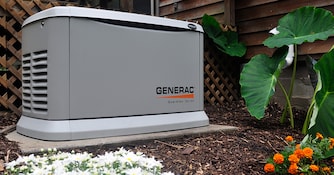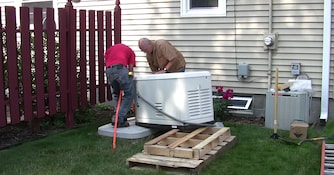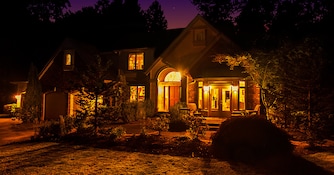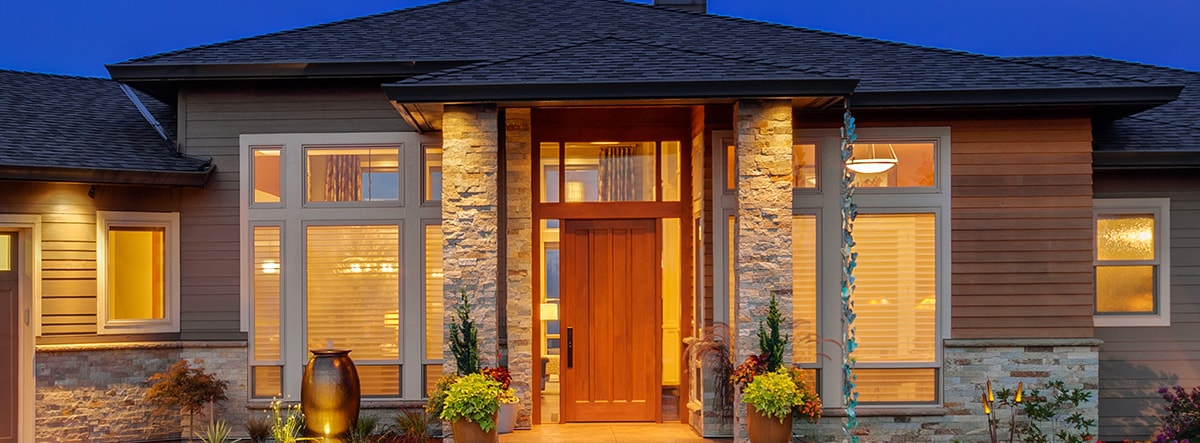
{"storeInfo":{"id":7,"name":"Electric Generators Direct","domain":"electricgeneratorsdirect.com","initials":"EGD","url":"https:\/\/www.electricgeneratorsdirect.com","path":"\/var\/www\/vhosts\/egd.com\/"},"headerNavJSON":"{\"MainLinks\":[{\"URL\":\"\\\/power\\\/portable-generators.html\",\"displayText\":\"Portable Generators\",\"sectionLinks\":{\"columns\":\"6\",\"linkItems\":[{\"URL\":\"\\\/power\\\/recreational-generators.html\",\"imageURL\":\"\\\/nav-image\\\/100\\\/RecGen_100x100_8e0d1b5eda78548a46e699dbbe2715f4.jpg\",\"displayText\":\"Recreational\"},{\"URL\":\"\\\/power\\\/emergency-portable-generators.html\",\"imageURL\":\"\\\/nav-image\\\/100\\\/portable-7-2.jpg\",\"displayText\":\"Emergency (Backup)\"},{\"URL\":\"\\\/power\\\/professional-portable-generators.html\",\"imageURL\":\"\\\/nav-image\\\/100\\\/portable-7-3.jpg\",\"displayText\":\"Professional\"},{\"URL\":\"\\\/power\\\/inverter-generators.html\",\"imageURL\":\"\\\/nav-image\\\/100\\\/portable-7-4.jpg\",\"displayText\":\"Inverter\"},{\"URL\":\"\\\/power\\\/solar-generators.html\",\"imageURL\":\"\\\/nav-image\\\/100\\\/ecoflow_delta_nav_fd3833954cfd584f648706ebd875bcc2.jpg\",\"displayText\":\"Solar\"},{\"URL\":\"\\\/power\\\/portable-generator-accessories.html\",\"imageURL\":\"\\\/nav-image\\\/100\\\/portable-7-6.jpg\",\"displayText\":\"Accessories\"}]},\"subCategories\":[{\"URL\":null,\"type\":\"list\",\"title\":\"Popular Brands\",\"linkItems\":[{\"URL\":\"\\\/power\\\/generac-portable-generators.html\",\"displayText\":\"Generac\"},{\"URL\":\"\\\/power\\\/honda-generators.html\",\"displayText\":\"Honda\"},{\"URL\":\"\\\/power\\\/champion-generators.html\",\"displayText\":\"Champion\"},{\"URL\":\"\\\/power\\\/westinghouse-generators.html\",\"displayText\":\"Westinghouse\"},{\"URL\":\"\\\/power\\\/winco-portable-generators.html\",\"displayText\":\"Winco\"}]},{\"URL\":null,\"type\":\"list\",\"title\":\"Shop by Fuel Type\",\"linkItems\":[{\"URL\":\"\\\/power\\\/diesel-portable-generators.html\",\"displayText\":\"Diesel\"},{\"URL\":\"\\\/power\\\/portable-dual-fuel-generators.html\",\"displayText\":\"Dual Fuel\"},{\"URL\":\"\\\/power\\\/gas-portable-generators.html\",\"displayText\":\"Gas\"},{\"URL\":\"\\\/power\\\/propane-portable-generators.html\",\"displayText\":\"Propane (LP)\"},{\"URL\":\"\\\/power\\\/natural-gas-portable-generators.html\",\"displayText\":\"Natural Gas\"}]},{\"URL\":null,\"type\":\"list\",\"title\":\"Popular Categories\",\"linkItems\":[{\"URL\":\"\\\/power\\\/camping-generators.html\",\"displayText\":\"Camping\"},{\"URL\":\"\\\/power\\\/electric-start-portable-generators.html\",\"displayText\":\"Electric Start\"},{\"URL\":\"\\\/power\\\/remote-start-generators.html\",\"displayText\":\"Remote Start\"},{\"URL\":\"\\\/power\\\/tailgate-generators.html\",\"displayText\":\"Tailgating\"},{\"URL\":\"\\\/power\\\/in-stock-portable-generators.html\",\"displayText\":\"In-Stock\"}]},{\"URL\":\"\\\/stories\\\/306-How-to-Pick-the-Perfect-Portable-Generator.html\",\"type\":\"image\",\"title\":\"Buyer's Guide\",\"imageURL\":\"\\\/nav-article-image\\\/305\\\/social_img_306.jpg\",\"linkItems\":[],\"displayText\":\"Portable Generator Buyer's Guide\"}]},{\"URL\":\"\\\/power\\\/home-standby-generators.html\",\"displayText\":\"Home Standby Generators\",\"sectionLinks\":{\"columns\":\"6\",\"linkItems\":[{\"URL\":\"\\\/power\\\/24-26-kw-home-standby-generators.html\",\"imageURL\":\"\\\/nav-image\\\/100\\\/standby-7-7_fdb8e94fbf88f273bfd2976d62042d0f.jpg\",\"displayText\":\"24-26kW\"},{\"URL\":\"\\\/power\\\/20-kw-22-kw-home-standby-generators.html\",\"imageURL\":\"\\\/nav-image\\\/100\\\/standby-7-1.jpg\",\"displayText\":\"20-22kW\"},{\"URL\":\"\\\/power\\\/13-18-kw-home-standby-generators.html\",\"imageURL\":\"\\\/nav-image\\\/100\\\/14kw_d288f6cf086641884099f3b30e520701.jpg\",\"displayText\":\"13-18kW\"},{\"URL\":\"\\\/power\\\/10-kw-12-kw-home-standby-generators.html\",\"imageURL\":\"\\\/nav-image\\\/100\\\/standby-7-4.jpg\",\"displayText\":\"10-12kW\"},{\"URL\":\"\\\/power\\\/whole-house-standby-generators.html\",\"imageURL\":\"\\\/nav-image\\\/100\\\/standby-7-6.jpg\",\"displayText\":\"Whole House\"},{\"URL\":\"\\\/power\\\/7-kw-9-kw-home-standby-generators.html\",\"imageURL\":\"\\\/nav-image\\\/100\\\/generacpowerpack_dde7cdb6f64fa80c92d11f1a36d5ebca.jpg\",\"displayText\":\"7-9kW\"}]},\"subCategories\":[{\"URL\":null,\"type\":\"list\",\"title\":\"Popular Brands\",\"linkItems\":[{\"URL\":\"\\\/power\\\/generac-home-standby-generators.html\",\"displayText\":\"Generac\"},{\"URL\":\"\\\/power\\\/kohler-home-standby-generators.html\",\"displayText\":\"Kohler\"},{\"URL\":\"\\\/power\\\/briggs-and-stratton-home-standby-generators.html\",\"displayText\":\"Briggs & Stratton\"},{\"URL\":\"\\\/power\\\/cummins-onan-home-standby-generators.html\",\"displayText\":\"Cummins\"},{\"URL\":\"\\\/power\\\/winco-standby-generators.html\",\"displayText\":\"Winco\"}]},{\"URL\":null,\"type\":\"list\",\"title\":\"Shop by Fuel Type\",\"linkItems\":[{\"URL\":\"\\\/power\\\/liquid-propane-home-standby-generators.html\",\"displayText\":\"Propane (LP)\"},{\"URL\":\"\\\/power\\\/natural-gas-home-standby-generators.html\",\"displayText\":\"Natural Gas\"},{\"URL\":\"\\\/power\\\/diesel-home-standby-generators.html\",\"displayText\":\"Diesel\"}]},{\"URL\":null,\"type\":\"list\",\"title\":\"Shop By Switch Amps\",\"linkItems\":[{\"URL\":\"\\\/power\\\/50-amp-home-standby-generators.html\",\"displayText\":\"50-Amp\"},{\"URL\":\"\\\/power\\\/100-amp-home-standby-generators.html\",\"displayText\":\"100-Amp\"},{\"URL\":\"\\\/power\\\/150-amp-home-standby-generators.html\",\"displayText\":\"150-Amp\"},{\"URL\":\"\\\/power\\\/200-amp-home-standby-generators.html\",\"displayText\":\"200-Amp\"},{\"URL\":\"\\\/power\\\/400-amp-home-standby-generators.html\",\"displayText\":\"400-Amp\"}]},{\"URL\":\"\\\/stories\\\/36-How-to-Pick-the-Perfect-Home-Standby-Generator.html\",\"type\":\"image\",\"title\":\"Buyer's Guide\",\"imageURL\":\"\\\/nav-article-image\\\/305\\\/social_img_36.jpg\",\"linkItems\":[],\"displayText\":\"Home Standby Generator Buyer's Guide\"}]},{\"URL\":\"\\\/power\\\/commercial-generators.html\",\"displayText\":\"Commercial Generators\",\"sectionLinks\":{\"columns\":\"6\",\"linkItems\":[{\"URL\":\"\\\/power\\\/commercial-standby-generators.html\",\"imageURL\":\"\\\/nav-image\\\/100\\\/commercial-7-1.jpg\",\"displayText\":\"Standby\"},{\"URL\":\"\\\/power\\\/towable-generators.html\",\"imageURL\":\"\\\/nav-image\\\/100\\\/commercial-7-2.jpg\",\"displayText\":\"Towable\"},{\"URL\":\"\\\/power\\\/skid-mount-generators.html\",\"imageURL\":\"\\\/nav-image\\\/100\\\/commercial-7-3.jpg\",\"displayText\":\"Skid Mount\"},{\"URL\":\"\\\/power\\\/light-towers.html\",\"imageURL\":\"\\\/nav-image\\\/100\\\/commercial-7-4.jpg\",\"displayText\":\"Light Towers\"},{\"URL\":\"\\\/power\\\/commercial-mobile-generators.html\",\"imageURL\":\"\\\/nav-image\\\/100\\\/commercial-7-5.jpg\",\"displayText\":\"Mobile\"}]},\"subCategories\":[{\"URL\":null,\"type\":\"list\",\"title\":\"Popular Brands\",\"linkItems\":[{\"URL\":\"\\\/power\\\/briggs-and-stratton-commercial-standby-generators.html\",\"displayText\":\"Briggs & Stratton\"},{\"URL\":\"\\\/power\\\/cummins-onan-commercial-generators.html\",\"displayText\":\"Cummins\"},{\"URL\":\"\\\/power\\\/generac-commercial-generators.html\",\"displayText\":\"Generac\"},{\"URL\":\"\\\/power\\\/kohler-commercial-standby-generators.html\",\"displayText\":\"Kohler\"},{\"URL\":\"\\\/power\\\/honeywell-commercial-standby-generators.html\",\"displayText\":\"Honeywell\"}]},{\"URL\":null,\"type\":\"list\",\"title\":\"Shop by Fuel Type\",\"linkItems\":[{\"URL\":\"\\\/power\\\/liquid-propane-commercial-standby-generators.html\",\"displayText\":\"Propane (LP)\"},{\"URL\":\"\\\/power\\\/natural-gas-commercial-standby-generators.html\",\"displayText\":\"Natural Gas\"},{\"URL\":\"\\\/power\\\/diesel-commercial-generators.html\",\"displayText\":\"Diesel\"}]},{\"URL\":null,\"type\":\"list\",\"title\":\"Shop by Voltage\",\"linkItems\":[{\"URL\":\"\\\/power\\\/120-240v-single-phase-commercial-generators.html\",\"displayText\":\"120\\\/240 1P\"},{\"URL\":\"\\\/power\\\/120-240v-three-phase-commercial-generators.html\",\"displayText\":\"120\\\/240 3P\"},{\"URL\":\"\\\/power\\\/120-208v-three-phase-commercial-generators.html\",\"displayText\":\"120\\\/208 3P\"},{\"URL\":\"\\\/power\\\/277-480v-three-phase-commercial-generators.html\",\"displayText\":\"277\\\/480 3P\"}]},{\"URL\":\"\\\/stories\\\/47-How-to-Pick-the-Perfect-Commercial-Generator.html\",\"type\":\"image\",\"title\":\"Buyer's Guide\",\"imageURL\":\"\\\/nav-article-image\\\/305\\\/social_img_47.jpg\",\"linkItems\":[],\"displayText\":\"Commercial Generator Buyer's Guide\"}]},{\"URL\":\"\\\/power\\\/rv-generators.html\",\"displayText\":\"RV Generators\",\"sectionLinks\":{\"columns\":\"6\",\"linkItems\":[{\"URL\":\"\\\/power\\\/portable-rv-generators.html\",\"imageURL\":\"\\\/nav-image\\\/100\\\/rv-7-1.jpg\",\"displayText\":\"Portable RV\"},{\"URL\":\"\\\/power\\\/gas-rv-generators.html\",\"imageURL\":\"\\\/nav-image\\\/100\\\/rv-7-2.jpg\",\"displayText\":\"Gas RV\"},{\"URL\":\"\\\/power\\\/lp-rv-generators.html\",\"imageURL\":\"\\\/nav-image\\\/100\\\/rv-7-3.jpg\",\"displayText\":\"LP RV\"},{\"URL\":\"\\\/power\\\/diesel-rv-generators.html\",\"imageURL\":\"\\\/nav-image\\\/100\\\/rv-7-4.jpg\",\"displayText\":\"Diesel RV\"},{\"URL\":\"\\\/power\\\/commercial-rv-generators.html\",\"imageURL\":\"\\\/nav-image\\\/100\\\/rv-7-5.jpg\",\"displayText\":\"Commercial Mobile\"}]},\"subCategories\":[{\"URL\":null,\"type\":\"list\",\"title\":\"Portable Accessories\",\"linkItems\":[{\"URL\":\"\\\/power\\\/inverter-generators.html\",\"displayText\":\"Inverter\"},{\"URL\":\"\\\/power\\\/portable-generators-with-rv-plug.html\",\"displayText\":\"RV Outlet\"},{\"URL\":\"\\\/power\\\/remote-start-generators.html\",\"displayText\":\"Remote Start\"},{\"URL\":\"\\\/power\\\/conventional-portable-generators.html\",\"displayText\":\"Conventional\"},{\"URL\":\"\\\/power\\\/camping-generators.html\",\"displayText\":\"Camping\"}]},{\"URL\":null,\"type\":\"list\",\"title\":\"Popular Brands\",\"linkItems\":[{\"URL\":\"\\\/power\\\/briggs-and-stratton-rv-generators.html\",\"displayText\":\"Briggs & Stratton\"},{\"URL\":\"\\\/power\\\/champion-rv-generators.html\",\"displayText\":\"Champion\"},{\"URL\":\"\\\/power\\\/cummins-onan-rv-generators.html\",\"displayText\":\"Cummins\"},{\"URL\":\"\\\/power\\\/firman-rv-generators.html\",\"displayText\":\"Firman\"},{\"URL\":\"\\\/power\\\/generac-rv-generator.html\",\"displayText\":\"Generac\"},{\"URL\":\"\\\/power\\\/goal-zero-rv-generators.html\",\"displayText\":\"Goal Zero\"},{\"URL\":\"\\\/power\\\/honda-rv-generators.html\",\"displayText\":\"Honda\"},{\"URL\":\"\\\/power\\\/yamaha-rv-generators.html\",\"displayText\":\"Yamaha\"},{\"URL\":\"\\\/power\\\/westinghouse-rv-generators.html\",\"displayText\":\"Westinghouse\"}]},{\"URL\":\"\\\/stories\\\/155-How-to-Pick-the-Perfect-RV-Generator.html\",\"type\":\"image\",\"title\":\"Buyer's Guide\",\"imageURL\":\"\\\/nav-article-image\\\/305\\\/social_img_155.jpg\",\"linkItems\":[],\"displayText\":\"RV Generator Buyer's Guide\"}]},{\"URL\":\"\\\/power\\\/pto-generators.html\",\"displayText\":\"PTO Generators\",\"sectionLinks\":{\"columns\":\"6\",\"linkItems\":[{\"URL\":\"\\\/power\\\/540-rpm-pto-generators.html\",\"imageURL\":\"\\\/nav-image\\\/100\\\/pto-7-1.jpg\",\"displayText\":\"540 RPM\"},{\"URL\":\"\\\/power\\\/1000-rpm-pto-generators.html\",\"imageURL\":\"\\\/nav-image\\\/100\\\/pto-7-2.jpg\",\"displayText\":\"1000 RPM\"},{\"URL\":\"\\\/power\\\/pto-generator-transfer-switches.html\",\"imageURL\":\"\\\/nav-image\\\/100\\\/pto-7-3.jpg\",\"displayText\":\"Transfer Switches\"},{\"URL\":\"\\\/accessories.php#pto\",\"imageURL\":\"\\\/nav-image\\\/100\\\/pto-7-4.jpg\",\"displayText\":\"Accessories\"}]},\"subCategories\":[{\"URL\":null,\"type\":\"list\",\"title\":\"Popular Brands\",\"linkItems\":[{\"URL\":\"\\\/power\\\/imd-pto-generators.html\",\"displayText\":\"IMD\"},{\"URL\":\"\\\/power\\\/winco-pto-generators.html\",\"displayText\":\"Winco\"}]},{\"URL\":null,\"type\":\"list\",\"title\":\"Shop by Watts\",\"linkItems\":[{\"URL\":\"\\\/power\\\/10-20-kw-pto-generators.html\",\"displayText\":\"10-20kW\"},{\"URL\":\"\\\/power\\\/20-40-kw-pto-generators.html\",\"displayText\":\"20-40kW\"},{\"URL\":\"\\\/power\\\/40-60-kw-pto-generators.html\",\"displayText\":\"40-60kW\"},{\"URL\":\"\\\/power\\\/60-100-kw-pto-generators.html\",\"displayText\":\"60-100kW\"},{\"URL\":\"\\\/power\\\/100-plus-kw-pto-generators.html\",\"displayText\":\"100+kW\"}]},{\"URL\":null,\"type\":\"list\",\"title\":\"Shop by Voltage\",\"linkItems\":[{\"URL\":\"\\\/power\\\/120-240-volt-single-phase-pto-generators.html\",\"displayText\":\"120\\\/240 1P\"},{\"URL\":\"\\\/power\\\/120-240-volt-three-phase-pto-generators.html\",\"displayText\":\"120\\\/240 3P\"},{\"URL\":\"\\\/power\\\/120-208-volt-3-phase-pto-generators.html\",\"displayText\":\"120\\\/208 3P\"},{\"URL\":\"\\\/power\\\/277-480-volt-3-phase-pto-generators.html\",\"displayText\":\"277\\\/480 3P\"}]},{\"URL\":\"\\\/stories\\\/22-How-to-Pick-the-Perfect-Power-Take-Off-Generator.html\",\"type\":\"image\",\"title\":\"Buyer's Guide\",\"imageURL\":\"\\\/nav-article-image\\\/305\\\/social_img_22.jpg\",\"linkItems\":[],\"displayText\":\"PTO Generator Buyer's Guide\"}]},{\"URL\":\"\\\/power\\\/solar-generators.html\",\"displayText\":\"Solar\",\"sectionLinks\":{\"columns\":\"6\",\"linkItems\":[{\"URL\":\"\\\/power\\\/portable-power-stations.html\",\"imageURL\":\"\\\/nav-image\\\/100\\\/powerstation_27c198108d1ae6465e8ca5d74faceecc.jpg\",\"displayText\":\"Portable Power Stations\"},{\"URL\":\"\\\/power\\\/home-solar-generators.html\",\"imageURL\":\"\\\/nav-image\\\/100\\\/kohler-power-reserve-nav_e21477bcefd71712d8e7a52662d5763d.jpg\",\"displayText\":\"Whole Home\"},{\"URL\":\"\\\/power\\\/battery-storage.html\",\"imageURL\":\"\\\/nav-image\\\/100\\\/inverter_316e5a592e91670dd80b3eb884cdf7ac.jpg\",\"displayText\":\"Battery Storage\"},{\"URL\":\"\\\/power\\\/off-grid-generators.html\",\"imageURL\":\"\\\/nav-image\\\/100\\\/offgrid_63a10f60d1c97a0757d4b4ee77eb8cef.jpg\",\"displayText\":\"Off Grid\"}]},\"subCategories\":[{\"URL\":null,\"type\":\"list\",\"title\":\"Popular Brands\",\"linkItems\":[{\"URL\":\"\\\/power\\\/generac-pwrcell.html\",\"displayText\":\"Generac PWRcell\"},{\"URL\":\"\\\/power\\\/ecoflow.html\",\"displayText\":\"EcoFlow\"},{\"URL\":\"\\\/power\\\/anker-solix-generators.html\",\"displayText\":\"Anker SOLIX\"},{\"URL\":\"\\\/power\\\/westinghouse-solar-generators.html\",\"displayText\":\"Westinghouse\"},{\"URL\":\"\\\/power\\\/kohler-solar-generators.html\",\"displayText\":\"Kohler\"}]},{\"URL\":\"\\\/stories\\\/1935-Home-Energy-Storage-Buyers-Guide.html\",\"type\":\"image\",\"title\":\"Buyer's Guide\",\"imageURL\":\"\\\/nav-article-image\\\/305\\\/social_img_1935_b00b6a4314e8dfe5f593d9f4b71a2192.jpg\",\"linkItems\":[],\"displayText\":\"How to Get Free Electricity at Home\"}]},{\"URL\":\"\\\/power\\\/transfer-switches.html\",\"displayText\":\"Transfer Switches\",\"sectionLinks\":{\"columns\":\"6\",\"linkItems\":[{\"URL\":\"\\\/power\\\/automatic-transfer-switches.html\",\"imageURL\":\"\\\/nav-image\\\/100\\\/transfer-switch-7-1.jpg\",\"displayText\":\"Automatic Switches\"},{\"URL\":\"\\\/power\\\/manual-transfer-switches.html\",\"imageURL\":\"\\\/nav-image\\\/100\\\/transfer-switch-7-2.jpg\",\"displayText\":\"Manual Switches\"},{\"URL\":\"\\\/power\\\/power-transfer-systems.html\",\"imageURL\":\"\\\/nav-image\\\/100\\\/transfer-switch-7-3.jpg\",\"displayText\":\"Complete Transfer Systems\"}]},\"subCategories\":[{\"URL\":null,\"type\":\"list\",\"title\":\"Popular Brands\",\"linkItems\":[{\"URL\":\"\\\/power\\\/briggs-and-stratton-transfer-switches.html\",\"displayText\":\"Briggs & Stratton\"},{\"URL\":\"\\\/power\\\/automatic-transfer-switch-cummins-onan.html\",\"displayText\":\"Cummins\"},{\"URL\":\"\\\/power\\\/generac-transfer-switches.html\",\"displayText\":\"Generac\"},{\"URL\":\"\\\/power\\\/automatic-transfer-switch-kohler.html\",\"displayText\":\"Kohler\"},{\"URL\":\"\\\/power\\\/reliance-controls-manual-transfer-switches.html\",\"displayText\":\"Reliance Controls\"}]},{\"URL\":null,\"type\":\"list\",\"title\":\"ATS Amperage\",\"linkItems\":[{\"URL\":\"\\\/power\\\/automatic-transfer-switch-100a.html\",\"displayText\":\"100-Amp\"},{\"URL\":\"\\\/power\\\/150-amp-automatic-transfer-switches.html\",\"displayText\":\"150-Amp\"},{\"URL\":\"\\\/power\\\/automatic-transfer-switch-200a.html\",\"displayText\":\"200-Amp\"},{\"URL\":\"\\\/power\\\/automatic-transfer-switch-400a.html\",\"displayText\":\"400-Amp\"},{\"URL\":\"\\\/power\\\/automatic-transfer-switch-600a.html\",\"displayText\":\"600-Amp\"}]},{\"URL\":null,\"type\":\"list\",\"title\":\"MTS Amperage\",\"linkItems\":[{\"URL\":\"\\\/power\\\/manual-transfer-switch-15a-120v.html\",\"displayText\":\"15-Amp\"},{\"URL\":\"\\\/power\\\/manual-transfer-switches-20a-120v.html\",\"displayText\":\"20-Amp\"},{\"URL\":\"\\\/power\\\/manual-transfer-switches-30a-120v.html\",\"displayText\":\"30-Amp\"},{\"URL\":\"\\\/power\\\/manual-transfer-switches-50a-twistlock.html\",\"displayText\":\"50-Amp\"},{\"URL\":\"\\\/power\\\/60-amp-manual-transfer-panels.html\",\"displayText\":\"60-Amp\"}]},{\"URL\":\"\\\/stories\\\/59-How-to-Connect-a-Portable-Generator-to-a-Home.html\",\"type\":\"image\",\"title\":\"Buyer's Guide\",\"imageURL\":\"\\\/nav-article-image\\\/305\\\/social_img_59.jpg\",\"linkItems\":[],\"displayText\":\"How To Hook Up A Generator\"}]},{\"URL\":\"\\\/accessories.php\",\"displayText\":\"Generator Accessories\",\"sectionLinks\":{\"columns\":\"6\",\"linkItems\":[{\"URL\":\"\\\/power\\\/generator-power-cords.html\",\"imageURL\":\"\\\/nav-image\\\/100\\\/acc-7-1.jpg\",\"displayText\":\"Power Cords\"},{\"URL\":\"\\\/power\\\/power-inlet-boxes.html\",\"imageURL\":\"\\\/nav-image\\\/100\\\/acc-7-2.jpg\",\"displayText\":\"Inlet Boxes\"},{\"URL\":\"\\\/power\\\/generator-maintenance-kits.html\",\"imageURL\":\"\\\/nav-image\\\/100\\\/acc-7-3.jpg\",\"displayText\":\"Maintenance Kits\"},{\"URL\":\"\\\/power\\\/portable-generator-covers.html\",\"imageURL\":\"\\\/nav-image\\\/100\\\/acc-7-4.jpg\",\"displayText\":\"Covers & Tents\"},{\"URL\":\"\\\/power\\\/standby-generator-cold-weather-kits.html\",\"imageURL\":\"\\\/nav-image\\\/100\\\/acc-7-5.jpg\",\"displayText\":\"Cold Weather Kits\"},{\"URL\":\"\\\/accessories.php\",\"imageURL\":\"\\\/nav-image\\\/100\\\/acc-7-6.jpg\",\"displayText\":\"All Accessories\"}]},\"subCategories\":[{\"URL\":null,\"type\":\"list\",\"title\":\"Standby Accessories\",\"linkItems\":[{\"URL\":\"\\\/power\\\/automatic-transfer-switches.html\",\"displayText\":\"Automatic Transfer Switches\"},{\"URL\":\"\\\/power\\\/generator-pads.html\",\"displayText\":\"Generator Pads\"},{\"URL\":\"\\\/power\\\/generator-monitors.html\",\"displayText\":\"Monitors\"},{\"URL\":\"\\\/power\\\/standby-generator-load-management.html\",\"displayText\":\"Load Managers\"}]},{\"URL\":null,\"type\":\"list\",\"title\":\"Portable Accessories\",\"linkItems\":[{\"URL\":\"\\\/power\\\/manual-transfer-switches.html\",\"displayText\":\"Manual Transfer Switches\"},{\"URL\":\"\\\/power\\\/generator-convenience-cords.html\",\"displayText\":\"Convenience Cords\"},{\"URL\":\"\\\/power\\\/inverter-generator-parallel-cables.html\",\"displayText\":\"Parallel Cables\"},{\"URL\":\"\\\/power\\\/generator-wheel-kits.html\",\"displayText\":\"Wheel Kits\"},{\"URL\":\"\\\/power\\\/generator-plugs-and-connectors.html\",\"displayText\":\"Plugs & Connectors\"}]},{\"URL\":null,\"type\":\"list\",\"title\":\"RV Accessories\",\"linkItems\":[{\"URL\":\"\\\/power\\\/rv-generator-remote-panels-and-wire-harnesses.html\",\"displayText\":\"Panels & Harnesses\"},{\"URL\":\"\\\/power\\\/portable-generator-rv-power-cords.html\",\"displayText\":\"RV Cords\"},{\"URL\":\"\\\/power\\\/rv-adapters.html\",\"displayText\":\"RV Adapters\"},{\"URL\":\"\\\/power\\\/remote-start-kits.html\",\"displayText\":\"Remote Start Kits\"},{\"URL\":\"\\\/power\\\/rv-generator-parallel-cables.html\",\"displayText\":\"Parallel Cables\"}]},{\"URL\":null,\"type\":\"list\",\"title\":\"PTO Accessories\",\"linkItems\":[{\"URL\":\"\\\/power\\\/pto-generator-tumbling-bars.html\",\"displayText\":\"Tumbling Bars\"},{\"URL\":\"\\\/power\\\/pto-generator-trailer-kits.html\",\"displayText\":\"Trailer Kits\"},{\"URL\":\"\\\/power\\\/pto-generator-3-point-hitches.html\",\"displayText\":\"3 Point Hitches\"},{\"URL\":\"\\\/power\\\/pto-generator-transfer-switches.html\",\"displayText\":\"Transfer Switches\"}]}]},{\"URL\":\"\\\/how-to-library.php\",\"displayText\":\"How-to Library\",\"sectionLinks\":{\"columns\":\"6\",\"linkItems\":[{\"URL\":\"\\\/stories_info.php?stories_id=36\",\"imageURL\":\"\\\/nav-article-image\\\/305\\\/social_img_36.jpg\",\"displayText\":\"Home Standby Generator Buyer's Guide\"},{\"URL\":\"\\\/stories_info.php?stories_id=306\",\"imageURL\":\"\\\/nav-article-image\\\/305\\\/social_img_306.jpg\",\"displayText\":\"Portable Generator Buyer's Guide\"},{\"URL\":\"\\\/stories_info.php?stories_id=1469\",\"imageURL\":\"\\\/nav-article-image\\\/305\\\/social_img_1469.jpg\",\"displayText\":\"Home Standby Generator Calculator\"},{\"URL\":\"\\\/stories_info.php?stories_id=781\",\"imageURL\":\"\\\/nav-image\\\/100\\\/bestegd_881d0e220474dd31c5adf228e661054e.jpg\",\"displayText\":\"The Best Electric Generators of 2023\"}]},\"subCategories\":[{\"URL\":null,\"type\":\"list\",\"title\":\"Helpful Articles\",\"linkItems\":[{\"URL\":\"\\\/stories_info.php?stories_id=1649\",\"displayText\":\"What Kind of Generator do I Need for my House\"},{\"URL\":\"\\\/stories_info.php?stories_id=305\",\"displayText\":\"Generator Buyer's Guide\"},{\"URL\":\"\\\/stories_info.php?stories_id=59\",\"displayText\":\"How to Hook Up a Generator\"},{\"URL\":\"\\\/stories_info.php?stories_id=676\",\"displayText\":\"The Best Portable Generators of 2023\"},{\"URL\":\"\\\/stories_info.php?stories_id=10\",\"displayText\":\"Power Transfer System Buyer's Guide\"},{\"URL\":\"\\\/stories_info.php?stories_id=677\",\"displayText\":\"The Best Standby Generators of 2023\"},{\"URL\":\"\\\/stories_info.php?stories_id=155\",\"displayText\":\"RV Generator Buyer's Guide\"},{\"URL\":\"\\\/stories_info.php?stories_id=1463\",\"displayText\":\"How to Start a Generator\"},{\"URL\":\"\\\/stories_info.php?stories_id=1485\",\"displayText\":\"How Generators Work\"},{\"URL\":\"\\\/stories_info.php?stories_id=1634\",\"displayText\":\"How to Save Electricity with Load Shedding\"}]},{\"URL\":\"\\\/how-to-library.php\",\"type\":\"button\",\"title\":\"Visit Our How-To Library\",\"linkItems\":[],\"displayText\":\"We make buying technical products simple. Get helpful tips and buying advice from our experts.\"}]},{\"URL\":\"\\\/power\\\/electric-generators-on-sale.html\",\"displayText\":\"Specials\",\"sectionLinks\":{\"columns\":\"6\",\"linkItems\":[{\"URL\":\"\\\/power\\\/portable-generators-on-sale.html\",\"imageURL\":\"\\\/nav-image\\\/100\\\/portable-7-4.jpg\",\"displayText\":\"Portable Generators On Sale\"},{\"URL\":\"\\\/power\\\/standby-generators-on-sale.html\",\"imageURL\":\"\\\/nav-image\\\/100\\\/standby-7-1.jpg\",\"displayText\":\"Standby Generators On Sale\"},{\"URL\":\"\\\/power\\\/pto-generators-on-sale.html\",\"imageURL\":\"\\\/nav-image\\\/100\\\/pto-7-2.jpg\",\"displayText\":\"PTO Generators On Sale\"},{\"URL\":\"\\\/power\\\/rv-generators-on-sale.html\",\"imageURL\":\"\\\/nav-image\\\/100\\\/rv-7-2.jpg\",\"displayText\":\"RV Generators On Sale\"},{\"URL\":\"\\\/power\\\/towable-generators-on-sale.html\",\"imageURL\":\"\\\/nav-image\\\/100\\\/commercial-7-2.jpg\",\"displayText\":\"Towable Generators On Sale\"},{\"URL\":\"\\\/power\\\/generator-accessories-on-sale.html\",\"imageURL\":\"\\\/nav-image\\\/100\\\/acc-7-5.jpg\",\"displayText\":\"Generators Accessories On Sale\"},{\"URL\":\"\\\/power\\\/electric-generators-on-sale.html\",\"imageURL\":\"\\\/nav-image\\\/100\\\/portable-7-2.jpg\",\"displayText\":\"All Generators On Sale\"}]},\"subCategories\":[]}],\"USP\":[{\"id\":\"473\",\"URL\":\"\\\/stories\\\/473-How-To-Get-Free-Shipping-On-Generators.html\",\"className\":\"icon-nav-usp-shipping\",\"displayText\":\"Free Shipping\"},{\"id\":\"511\",\"URL\":\"\\\/stories\\\/511-How-to-Easily-Unload-a-Generator.html\",\"className\":\"icon-nav-usp-liftgate\",\"displayText\":\"Free Liftgate\"},{\"id\":\"1266\",\"URL\":\"\\\/stories\\\/1266-How-to-Finance-Your-Backup-Generator-Purchase.html\",\"className\":\"icon-nav-usp-financing\",\"displayText\":\"Financing\"},{\"id\":\"2001\",\"URL\":\"\\\/stories\\\/2001-New-Customer-Referral-Program.html\",\"className\":\"icon-referral\",\"displayText\":\"Customer Referral Program\"}]}","siteLinkJSON":"{\"Resources\":{\"How to Library\":{\"href\":\"how-to-library.php\",\"title\":\"Electric Generators Direct How-To Library\"},\"Product Reviews\":{\"href\":\"reviews.php\",\"title\":\"Customer Reviews on Electric Generators Direct Products\"},\"Recommendations\":{\"href\":\"stories\\\/781-Best-Selling-and-Top-Rated-Generators.html\",\"title\":\"Product Recommendations\"},\"Weekly Specials\":{\"href\":\"power\\\/electric-generators-on-sale.html\",\"title\":\"Weekly Electric Generators Direct Specials\"},\"Manuals\":{\"href\":\"stories\\\/403-How-to-Access-Old-Generator-Manuals.html\",\"title\":\"Manual Lookup\"},\"Service Centers\":{\"href\":\"stories\\\/410-How-to-Find-a-Service-Center-For-Your-Generator.html\",\"title\":\"Service Centers\"},\"Technical Support\":{\"href\":\"stories\\\/422-How-to-Find-Tech-Support-For-Your-Generator.html\",\"title\":\"Technical Support\"}},\"Account\":{\"My Account\":{\"href\":\"account.php\",\"title\":\"Login to My Account\"},\"Email Preferences\":{\"href\":\"https:\\\/\\\/www.powerequipmentdirect.com\\\/newsletter_removal.php\",\"title\":\"Email Preferences\"},\"Manufacturer Login\":{\"href\":\"https:\\\/\\\/www.powerequipmentdirect.com\\\/partnerships\\\/login.php\",\"title\":\"Manufacturer Login\"}},\"Customer Service\":{\"Help Center\":{\"href\":\"contact_us.php\",\"title\":\"Help Center\"},\"Return Policy\":{\"href\":\"returns.php\",\"title\":\"Return Policy\"},\"Shipping Policy\":{\"href\":\"stories\\\/511-How-to-Easily-Unload-a-Generator.html\",\"title\":\"Shipping Policy\"},\"Product Recalls\":{\"href\":\"stories\\\/1495-Generator-Recalls.html\",\"title\":\"Product Recalls\"},\"Track Order\":{\"href\":\"ordertracking.php\",\"title\":\"Order Tracking\"},\"Financing\":{\"href\":\"stories\\\/1266-How-to-Finance-Your-Backup-Generator-Purchase.html\",\"title\":\"Financing\"},\"Accessibility\":{\"href\":\"stories\\\/1772-Our-Commitment-to-Accessibility.html\",\"title\":\"Accessibility\"},\"Do Not Sell or
Share My Personal Information\":{\"href\":\"https:\\\/\\\/ferguson.bigidprivacy.cloud\\\/consumer\\\/#\\\/dMf02ovZbN\\\/Form-NHWperWAaFNVIQK\",\"title\":\"Do Not Sell or Share My Personal Information\"}},\"About Us\":{\"Our Story\":{\"href\":\"https:\\\/\\\/www.powerequipmentdirect.com\\\/stories\\\/1982-How-We-Make-Buying-Technical-Products-Simple.html\",\"title\":\"Electric Generators Direct's Story\"},\"Careers\":{\"href\":\"https:\\\/\\\/www.powerequipmentdirect.com\\\/stories\\\/1924-Job-Openings.html\",\"title\":\"Careers @ Power Equipment Direct\"},\"Newsroom\":{\"href\":\"newsreleases.php\",\"title\":\"Electric Generators Direct News Center\"}},\"Contact Us\":{\"phone\":\"800-800-3317\",\"hours\":[\"M-F: 8-5 CST\",\"Sat: Closed\",\"Sun: Closed\"]}}","storeLinkJSON":"{\"AC Wholesalers\":{\"href\":\"https:\\\/\\\/www.acwholesalers.com\",\"title\":\"AC Wholesalers\"},\"Air Compressors Direct\":{\"href\":\"https:\\\/\\\/www.aircompressorsdirect.com\",\"title\":\"Air Compressors Direct\"},\"eComfort\":{\"href\":\"https:\\\/\\\/www.ecomfort.com\",\"title\":\"eComfort\"},\"Electric Generators Direct\":{\"href\":\"https:\\\/\\\/www.electricgeneratorsdirect.com\",\"title\":\"Electric Generators Direct\"},\"Power Equipment Direct\":{\"href\":\"https:\\\/\\\/www.powerequipmentdirect.com\",\"title\":\"Power Equipment Direct\"},\"Pressure Washers Direct\":{\"href\":\"https:\\\/\\\/www.pressurewashersdirect.com\",\"title\":\"Pressure Washers Direct\"},\"Sump Pumps Direct\":{\"href\":\"https:\\\/\\\/www.sumppumpsdirect.com\",\"title\":\"Sump Pumps Direct\"},\"Water Pumps Direct\":{\"href\":\"https:\\\/\\\/www.waterpumpsdirect.com\",\"title\":\"Water Pumps Direct\"}}","socialLinkJSON":"{\"Facebook\":{\"href\":\"https:\\\/\\\/www.facebook.com\\\/electricgeneratorsdirect\",\"icon\":\"icon-facebook\",\"title\":\"Facebook\"},\"Twitter\":{\"href\":\"http:\\\/\\\/twitter.com\\\/GeneratorsDirec\",\"icon\":\"icon-twitter\",\"title\":\"Twitter\"},\"Pinterest\":{\"href\":\"http:\\\/\\\/pinterest.com\\\/generatorsdirec\\\/\",\"icon\":\"icon-pinterest\",\"title\":\"Pinterest\"},\"YouTube\":{\"href\":\"https:\\\/\\\/www.youtube.com\\\/user\\\/ElectricGenerators\\\/\",\"icon\":\"icon-youtube\",\"title\":\"YouTube\"},\"Instagram\":{\"href\":\"https:\\\/\\\/www.instagram.com\\\/powerequipmentdirect\\\/\",\"icon\":\"icon-instagram\",\"title\":\"Instagram\"},\"LinkedIn\":{\"href\":\"https:\\\/\\\/www.linkedin.com\\\/company\\\/power-equipment-direct\\\/\",\"icon\":\"icon-linkedin\",\"title\":\"LinkedIn\"}}","miscLinkJSON":"{\"Terms of Use\":{\"href\":\"terms-of-use.php\",\"title\":\"Terms of Use\"},\"Privacy Policy & Security\":{\"href\":\"privacy.php\",\"title\":\"Privacy Policy and Security\"},\"Cookie Policy\":{\"href\":\"privacy.php#cookiePolicy\",\"title\":\"Cookie Policy\"},\"CA Privacy Rights\":{\"href\":\"privacy.php#californiaPrivacyRights\",\"title\":\"CA Privacy Rights\"},\"copyright\":\"© 2024 Power Equipment Direct. All Rights Reserved\"}","checkoutMiscLinkJSON":"{\"Privacy Policy & Security\":{\"href\":\"privacy.php\",\"title\":\"Privacy Policy and Security\"},\"Cookie Policy\":{\"href\":\"privacy.php#cookiePolicy\",\"title\":\"Cookie Policy\"},\"Terms of Use\":{\"href\":\"terms-of-use.php\",\"title\":\"Terms of Use\"},\"copyright\":\"© 2024 Power Equipment Direct. All Rights Reserved\"}","expertJSON":{"imageURL":"https:\/\/www.powerequipmentdirect.com\/images\/experts\/expert-main-7.png","href":"\/generator-product-expert.php","title":"Contact Jared @ Electric Generators Direct","expertName":"Jared","expertTitle":"Generator Expert"},"bbbJSON":{"imageURL":"https:\/\/www.powerequipmentdirect.com\/images\/badge-bbb.png","imageAlt":"Better Business Bureau\u00ae","href":"http:\/\/www.bbb.org\/chicago\/business-reviews\/industrial-equipment-and-supplies\/power-equipment-direct-in-bolingbrook-il-57001088","title":"Electric Generators Direct - A+ Rating - Better Business Bureau\u00ae"},"zipCode":null,"phoneNumber":"800-800-3317","loginToken":"page cache precludes the use of csrf tokens","iterable":"e4b27e68b9c84fbb940829a0a9ee29d7","newNav":false}
Share My Personal Information\":{\"href\":\"https:\\\/\\\/ferguson.bigidprivacy.cloud\\\/consumer\\\/#\\\/dMf02ovZbN\\\/Form-NHWperWAaFNVIQK\",\"title\":\"Do Not Sell or Share My Personal Information\"}},\"About Us\":{\"Our Story\":{\"href\":\"https:\\\/\\\/www.powerequipmentdirect.com\\\/stories\\\/1982-How-We-Make-Buying-Technical-Products-Simple.html\",\"title\":\"Electric Generators Direct's Story\"},\"Careers\":{\"href\":\"https:\\\/\\\/www.powerequipmentdirect.com\\\/stories\\\/1924-Job-Openings.html\",\"title\":\"Careers @ Power Equipment Direct\"},\"Newsroom\":{\"href\":\"newsreleases.php\",\"title\":\"Electric Generators Direct News Center\"}},\"Contact Us\":{\"phone\":\"800-800-3317\",\"hours\":[\"M-F: 8-5 CST\",\"Sat: Closed\",\"Sun: Closed\"]}}","storeLinkJSON":"{\"AC Wholesalers\":{\"href\":\"https:\\\/\\\/www.acwholesalers.com\",\"title\":\"AC Wholesalers\"},\"Air Compressors Direct\":{\"href\":\"https:\\\/\\\/www.aircompressorsdirect.com\",\"title\":\"Air Compressors Direct\"},\"eComfort\":{\"href\":\"https:\\\/\\\/www.ecomfort.com\",\"title\":\"eComfort\"},\"Electric Generators Direct\":{\"href\":\"https:\\\/\\\/www.electricgeneratorsdirect.com\",\"title\":\"Electric Generators Direct\"},\"Power Equipment Direct\":{\"href\":\"https:\\\/\\\/www.powerequipmentdirect.com\",\"title\":\"Power Equipment Direct\"},\"Pressure Washers Direct\":{\"href\":\"https:\\\/\\\/www.pressurewashersdirect.com\",\"title\":\"Pressure Washers Direct\"},\"Sump Pumps Direct\":{\"href\":\"https:\\\/\\\/www.sumppumpsdirect.com\",\"title\":\"Sump Pumps Direct\"},\"Water Pumps Direct\":{\"href\":\"https:\\\/\\\/www.waterpumpsdirect.com\",\"title\":\"Water Pumps Direct\"}}","socialLinkJSON":"{\"Facebook\":{\"href\":\"https:\\\/\\\/www.facebook.com\\\/electricgeneratorsdirect\",\"icon\":\"icon-facebook\",\"title\":\"Facebook\"},\"Twitter\":{\"href\":\"http:\\\/\\\/twitter.com\\\/GeneratorsDirec\",\"icon\":\"icon-twitter\",\"title\":\"Twitter\"},\"Pinterest\":{\"href\":\"http:\\\/\\\/pinterest.com\\\/generatorsdirec\\\/\",\"icon\":\"icon-pinterest\",\"title\":\"Pinterest\"},\"YouTube\":{\"href\":\"https:\\\/\\\/www.youtube.com\\\/user\\\/ElectricGenerators\\\/\",\"icon\":\"icon-youtube\",\"title\":\"YouTube\"},\"Instagram\":{\"href\":\"https:\\\/\\\/www.instagram.com\\\/powerequipmentdirect\\\/\",\"icon\":\"icon-instagram\",\"title\":\"Instagram\"},\"LinkedIn\":{\"href\":\"https:\\\/\\\/www.linkedin.com\\\/company\\\/power-equipment-direct\\\/\",\"icon\":\"icon-linkedin\",\"title\":\"LinkedIn\"}}","miscLinkJSON":"{\"Terms of Use\":{\"href\":\"terms-of-use.php\",\"title\":\"Terms of Use\"},\"Privacy Policy & Security\":{\"href\":\"privacy.php\",\"title\":\"Privacy Policy and Security\"},\"Cookie Policy\":{\"href\":\"privacy.php#cookiePolicy\",\"title\":\"Cookie Policy\"},\"CA Privacy Rights\":{\"href\":\"privacy.php#californiaPrivacyRights\",\"title\":\"CA Privacy Rights\"},\"copyright\":\"© 2024 Power Equipment Direct. All Rights Reserved\"}","checkoutMiscLinkJSON":"{\"Privacy Policy & Security\":{\"href\":\"privacy.php\",\"title\":\"Privacy Policy and Security\"},\"Cookie Policy\":{\"href\":\"privacy.php#cookiePolicy\",\"title\":\"Cookie Policy\"},\"Terms of Use\":{\"href\":\"terms-of-use.php\",\"title\":\"Terms of Use\"},\"copyright\":\"© 2024 Power Equipment Direct. All Rights Reserved\"}","expertJSON":{"imageURL":"https:\/\/www.powerequipmentdirect.com\/images\/experts\/expert-main-7.png","href":"\/generator-product-expert.php","title":"Contact Jared @ Electric Generators Direct","expertName":"Jared","expertTitle":"Generator Expert"},"bbbJSON":{"imageURL":"https:\/\/www.powerequipmentdirect.com\/images\/badge-bbb.png","imageAlt":"Better Business Bureau\u00ae","href":"http:\/\/www.bbb.org\/chicago\/business-reviews\/industrial-equipment-and-supplies\/power-equipment-direct-in-bolingbrook-il-57001088","title":"Electric Generators Direct - A+ Rating - Better Business Bureau\u00ae"},"zipCode":null,"phoneNumber":"800-800-3317","loginToken":"page cache precludes the use of csrf tokens","iterable":"e4b27e68b9c84fbb940829a0a9ee29d7","newNav":false}
We Make Buying Technical Products Simple


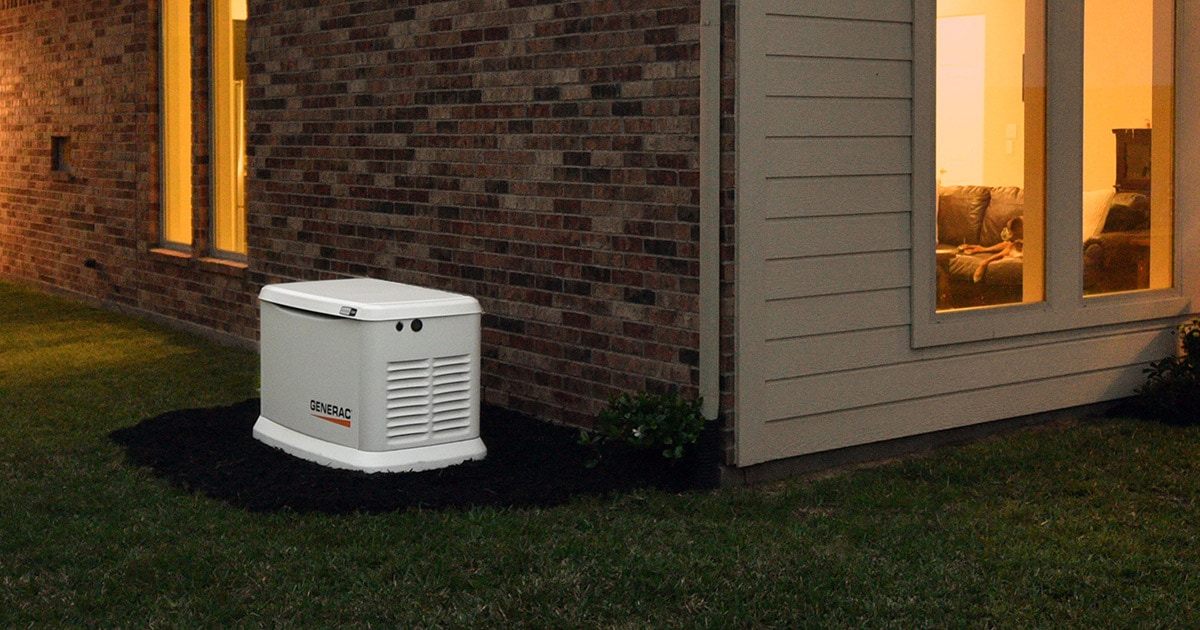 A whole-house generator is the ultimate safety net in a power outage. Unlike a portable or even a basic home standby generator, a whole-house generator can back up not only your essentials but even some nonessentials, making it feel like an outage never happened.
A whole-house generator is the ultimate safety net in a power outage. Unlike a portable or even a basic home standby generator, a whole-house generator can back up not only your essentials but even some nonessentials, making it feel like an outage never happened.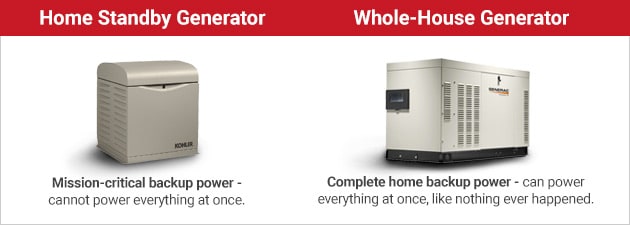
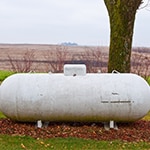 In many coastal and remote parts of the country, finding an abundant fuel source necessary for power generation can be problematic.
In many coastal and remote parts of the country, finding an abundant fuel source necessary for power generation can be problematic.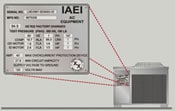 Proper sizing of your generator is crucial to the success of any installation and requires a good working knowledge of electricity, as well as the load requirements of your home's electrical appliances.
Proper sizing of your generator is crucial to the success of any installation and requires a good working knowledge of electricity, as well as the load requirements of your home's electrical appliances.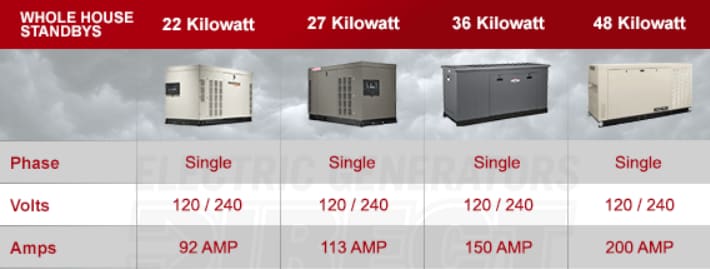
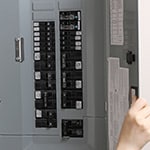 Just like a light bulb needs a switch to turn on, your generator needs one too. An
Just like a light bulb needs a switch to turn on, your generator needs one too. An 